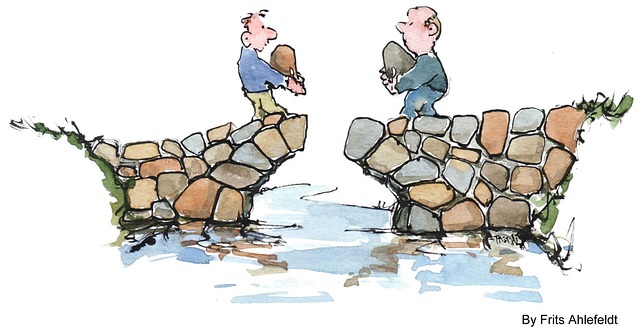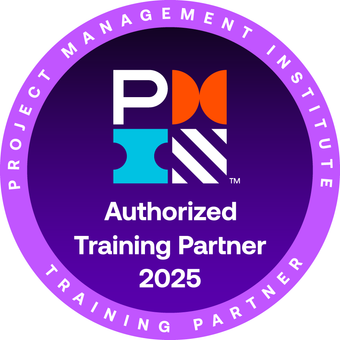[emaillocker]
Welcome to the PMO Strategies Podcast + Blog, where PMO leaders become IMPACT Drivers!
NOTE: For the very best experience, listen to this episode on your favorite podcast provider here.
This episode is sponsored by:

Agile Organizations Need Modern Governance Structures
Download this Forrester research report to learn the importance for Agile enterprise PMOs to provide a macro view of performance.
I was honored to share the stage with some of my favorite thought leaders in the PMO, PPM, and PM space last year at events like ProjectCon, PMI PMO Symposium, and other great venues. Among the folks that I brought with me to ProjectCon / Agile Con were Mark Price Perry, Lee Lambert, Barbara Trautlein, Mike Hannan, Andy Jordan, Judy Neher, Ben Kopel, Carolyn Smith, Jesse Fewell, and Bill Dow. These talented speakers and educators shared insights on all aspects of project management across the Agile and PM spectrum. It was an absolutely transformational experience for attendees.
Jesse Fewell and I did a keynote a few times last year like you’ve never seen before where we talked about the very real issues organizations and PMs and Agilists are facing as we figure out how to deliver on our organization’s strategy. We tackled the big “us and them” conversations that are happening in companies around the world and talked about ways to move past the methodology wars to solving the real business problems we are there to address.
And yes…that’s the punchline…sometimes it’s easy to lose focus on the real reason we are all gainfully employed in our organizations. We are there at the behest of the business to serve the business needs and help the organization deliver on their strategy. That could play out in a lot of ways in each organization, but the goal is to spend our energy focusing on the outcomes we are striving to achieve in our organizations instead of getting caught up in outputs.
Here are a few takeaways from that keynote that you can apply immediately to help shift the dialog to a more productive and outcome focused discussion and accelerate the IMPACT you are making in your organization on every project.
Step 1: Assume Positive Intent
It’s so easy to fall into the bad habit of playing the blame game when we don’t see eye to eye with someone else on the best approach to deliver projects. We tend to think things like, “they must want to do it that way because they are lazy and don’t want to do the documentation / follow the steps in the process / have the right governance or control” or “they just want to control me and remove all creative freedom from the process so they can check things off a list” when the reality could be vastly different. We can find ourselves making a lot of assumptions about the people we are working with and in the process, lose the chance to uncover the fact that we all have the same goal – to ensure this project achieves its intended outcomes for the business.
Instead, we may want to look beyond the words we are hearing or the actions we think we are seeing and interpreting, and ask a few questions to understand intent. If you shift the conversation to focus on the fact that you all want the project to succeed, you may find that you can have a much more productive discussion about the way to get there.
Remember that people generally want to do good work. They want to feel valued and they want to create value. What are the ways you can work together to create that value and enjoy the process?
Keep this in mind with your leaders, as well. The next time your leader makes a decision that seems to make no sense to you, before you jump to “they just don’t get it” or “they are making a bad decision,” consider that they might have access to information you don’t. They might have pressures placed upon them that dictate how they must respond and make decisions. We all have a boss telling us what to do and judging us on our performance.
That goes for your business leaders, as well. That boss can be someone in your organizational structure, a board of directors, or even the customers. They’re all applying pressure to all of us to achieve certain goals. What can you do to help those business leaders accomplish their goals and support them when they are under pressure? HINT: this is a great way to become a trusted advisor in your company and ultimately advance your own career path…business leaders reward those they can count on to help them, have their back, and make them look good.
One obvious way to do this is to simply ask. Talk to your colleagues and stakeholders about what they are working on, what they are trying to accomplish, and ask for their advice on how you can work together to acheive the shared goal.
Almost every PMO that I’ve created or run has had elements of Agile in it, even the IMPACT Engine PMO training and coaching program I run now is an agile implementation approach to building and running a PMO.
I don’t feel like we’re really all that different in what we’re trying to do. I’m going to dive deeper into this when I talk about how the PMO can support agile implementation methodologies, but for now just consider this. There’s a difference between project management as a framework and set of standards and guidance and an implementation methodology or approach. I see agile, as an implementation approach to getting a project accomplished.
There’s nothing in the PMBoK or project management standards or best practices that say every project must be a waterfall implementation approach. And if we consider the agile, it’s really two things, it’s the implementation methodology around the way we are going to deliver projects, and also a set of mindsets if you’ve read the Agile Manifesto. It’s a very clear set of we value this over this. It doesn’t say anywhere that it must be one way or another way, it just creates a set of mindsets and values.
I think that many of those mindsets and values would apply no matter what project you’re doing, and if you want to choose an implementation approach, like waterfall, or agile maybe Scrum for example, which is a form of Agile implementation approach, then that’s a project by project particular decision that you’re trying to make. But I think we get so caught up and confused between project management which is the set of knowledge skills standards and practices to get your projects delivered and achieving their outcomes, versus the methodology that we’re going to use to create those outputs and get to the outcomes. So just consider that when you guys might be talking about apples and oranges and saying that it’s this way and only this way, we might be closing ourselves off to a bigger perspective of how the two can work together.
How can we incorporate some agile mindsets, or an iterative nature iterative lifecycle of project delivery into the way we implement all of our projects for example, every single PMO that I’ve ever run has had some element of Agile in it, and almost every project I’ve ever delivered or my teams have delivered, even if they were traditional quote unquote waterfall, they still had many agile components iterative cycles inside that waterfall, for example, maybe the design, build, test created iterative cycles inside the entire delivery phase for the project for example. So, let’s not get caught up in your terminology or their terminology no matter which side of the fence you sit on and focus instead on the positive intent we’re trying to create an, ultimately, the outcomes we’re trying to achieve.
Step 2: Focus on the Outcomes more than the Outputs
In the day to day of managing projects and programs, it can be super easy to slide into the typical mindset of focusing on each deliverable, the best way to create those deliverables, and checking things off a list. Heck, I’m a list lover myself and truly enjoy seeing the products of my work. HOWEVER, if we get so laser-focused on the outputs we are creating, we can miss the chance to make the big IMPACT we’re looking to achieve.
Instead, we must ask ourselves why we are creating the deliverables, why we want another step in the process, AND ultimately how each of these templates, steps, etc. are leading DIRECTLY to the IMPACT we will make when they are delivered. It’s not enough to create the outputs if the outputs took so long or cost so much to create that the return that was expected for that investment won’t get realized. Don’t forget, you’re there to create an outcome…a business solution that leads to some greater return, or as I like to call it, “The Worth It Factor.”
So now that we’re assuming positive intent, and we’re focused on the outcomes, not just the outputs. Consider places where you might be able to put this into action.
Where can you get everyone laser focused on looking at the forest for the trees, the strategy, you’re going to deliver the business problem you’re solving the outcomes that you’re achieving. Where can you get everyone’s energy focus?
Where can you get everyone laser focus on looking at the forest for the trees, the strategy, you’re going to deliver the business problem you’re solving the outcomes that you’re achieving?
One important way to do this is to ask, why, why you’re doing that project in the first place. if you can get super aligned and get everyone super aligned on why that is a point that you guys can agree on, no matter where you sit in the Agile versus project management. False conversation. And yes, it’s a false conversation right because we’ve just talked about, agile is an implementation approach and a set of mindsets around managing and delivering projects surprise surprise. So where can you create that alignment around why you’re there, and then talk openly about the best way to achieve the outcomes you’re trying to achieve.
That might mean a little bit of Agile here, a little bit of traditional waterfall there, or completely removing all of that vernacular from your conversations and just focusing on what makes sense in the moment in the project in the problem you’re trying to solve. Keep it very neutral by just getting everyone laser focused on those outcomes, and then talking about how are we going to achieve those outcomes and embrace everybody’s ideas and bring everybody’s ideas to the table to have a holistic conversation around the best way to achieve that goal. And really, that leads to step number three.
Step 3: Be Willing to Bend
When we get so wrapped up in our way being the right and only way to do something, we can miss a unique opportunity to flex our approach to get to an even BETTER outcome faster. There are so many opportunities to look up and out at what we are trying to do, the problem we are trying to solve, the outcome we are trying to reach AND look at all of the various ways we might get to that outcome.
What if a combination of Agile and Waterfall approaches would yield a better result?
Don’t think that’s doable?
Whether we realize it or not, we’re already merging concepts from tons of different approaches. Are you doing a typical waterfall project? Does it have multiple releases? Might that also kinda look like iterations in an Agile environment?Have several test and release cycles in your development stages? Hmmm…iterations…hmmm…sound at all like an Agile/iterative framework? Yep
Getting clearer on your requirements before you put something into a sprint or doing a little planning of the sprint cycles before you start working on the deliverables? Yep, of course, you are, that’s a little waterfall (aka plan then do) like, ya know?
The point here is to make sure you don’t let yourself or your teams get caught up in the religious fight of my way is the only way and look for opportunities to merge methodologies or compromise on the approach to find ways to build trust, partnership, and an environment that will have everyone feeling like they can “see themselves” and their way of thinking and delivering value in the process. This will help everyone let go of theory and focus on the practice of making an IMPACT.

What change will you try today?
The next time you find yourself mistrusting the intentions of others, having an unbalanced focus on outputs over outcomes, or getting stuck in a rigid way of thinking, hit the pause button and look for ways to assume positive intent, shift your focus to outcomes, and be willing to bend. If you see this happening with one of your colleagues, this is your opporunity to show leadership and help shift them to a new way of thinking. Together, we can accomplish a heck of a lot more than spending one more moment in an “us vs. them” mindset and conversation.
 Hey there, IMPACT Driver!
Hey there, IMPACT Driver!
Thanks for taking the time to check out our podcast and blog.
I welcome your feedback and insights!
I’d love to know what you think and if you love it, please leave a rating and review in your favorite podcast player.
You can also complete this survey to tell us more about you and get my advice on how to take your next steps toward high-IMPACT!
Warmly,
Laura Barnard



